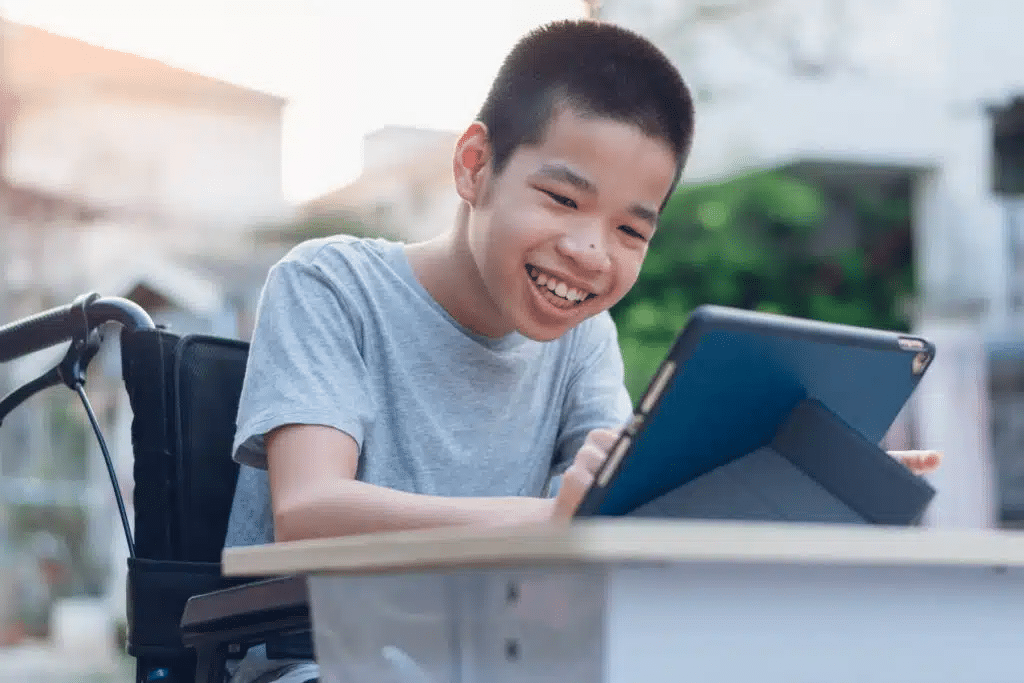Case studies of technology use in special education

In the realm of special education, the integration of technology has paved new ways for educators to foster team collaboration and enhance the learning experiences of students with diverse needs. This post explores various case studies highlighting the significant role technology has played in enriching educational programs catered to students requiring special education services.
By delving into these illustrative examples, we aim to provide educators, administrators, and policymakers with valuable insights on how tech-driven solutions can promote inclusivity, engagement, and efficient learning outcomes in special education settings.
Inclusive Learning through Augmented Reality
The application of augmented reality (AR) in a school for children with autism spectrum disorders has revolutionized the way educators approach teaching and team collaboration. By using AR tools, teachers were able to create immersive and interactive learning experiences that catered to the sensory needs of their students. This technology facilitated a supportive learning environment where students could engage with educational content in a way that was both enjoyable and effective.
One specific case saw a dramatic improvement in communication skills among the students. Through AR games and activities, students who previously struggled with verbal expression began using new words and phrases to describe their experiences in the AR environment. The visual and tactile nature of AR also helped students with spatial awareness and fine motor skills.
This case study underscored the importance of integrating technology that supports team collaboration among educators while providing customizable learning experiences for students with special needs.
Enhanced Communication with Speech-to-Text Technology
An elementary school introduced speech-to-text devices to assist students with significant speech and language difficulties. These tools empowered students to articulate their thoughts and participate in classroom discussions by converting their spoken words into written text in real-time.
Notably, this technological intervention facilitated better inclusion of students in team collaborations and group activities. It provided them with a voice, literally and figuratively, allowing them to contribute ideas and engage with peers more actively than before.
The results were profound, with students showing marked improvements in self-confidence and academic performance. Teachers observed an increase in classroom participation and a more vibrant and interactive learning atmosphere.
Collaborative Learning with Interactive Whiteboards
Interactive whiteboards have become a staple in special education classrooms, offering an array of opportunities for team collaboration and active learning. One notable case involved a middle school that integrated these whiteboards into lessons tailored for students with learning disabilities.
The technology allowed for the presentation of multimedia educational materials in a dynamic and engaging manner. Students could interact directly with the content through touch and gestures, making learning more tangible and accessible.
Furthermore, the whiteboards facilitated collaborative projects where students worked in teams to solve problems, conduct research, and present findings. This not only enhanced their understanding of the subject matter but also developed their social skills and ability to work effectively in a team.
This example illustrates how technology can transform traditional educational settings into interactive, collaborative, and inclusive spaces that benefit all students, especially those with special educational needs.
Virtual Reality for Experiential Learning
Virtual reality (VR) technology has been employed in a high school setting to provide students with cognitive disabilities a safe environment for experiential learning. Through VR simulations, students embarked on virtual field trips, explored historical events, and performed science experiments in a controlled, immersive environment.
The impact of VR on team collaboration was particularly noteworthy. Students worked together to navigate through virtual landscapes, solve puzzles, and complete tasks, fostering a sense of unity and shared achievement.
This case highlighted VR's potential to deliver personalized learning experiences that cater to the specific needs of students, making complex concepts more understandable and engaging.
The integration of technology into special education has shown tremendous potential in enhancing the learning experience for students with diverse needs. These case studies not only highlight the transformative impact technology can have but also emphasize the importance of team collaboration in deploying these tools effectively. With the right approach, technology can serve as a powerful ally in making education more inclusive, interactive, and empowering for every student.

Related